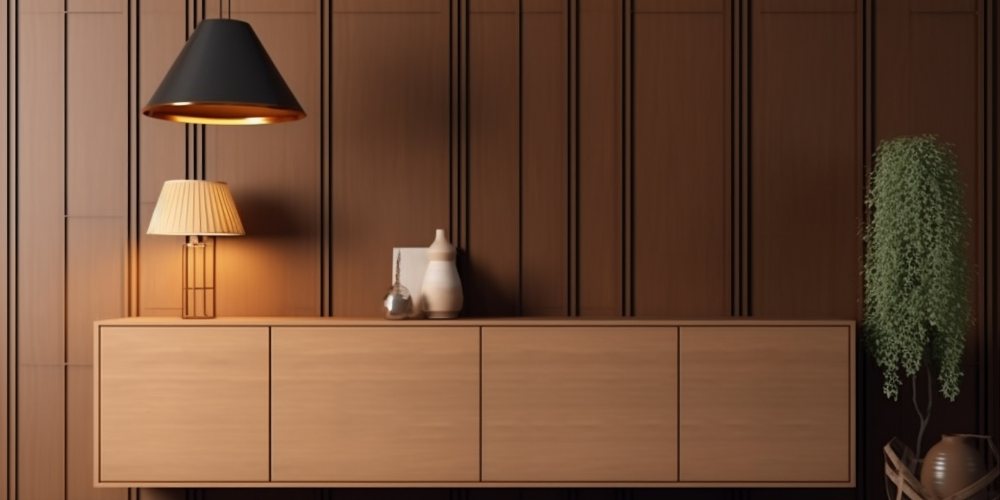Finding the right interior designer has never been easier!
Looking for the best interior designer in Dhaka to handle your upcoming project?
Searching for a designer that you can feel comfortable working with but don’t know how exactly to find them?
Well then, I have good news for you!
Selecting an interior designer is not that difficult. It’s just a matter of being methodical, asking the right questions and getting the information you need to make an informed decision.
To help you, we have broken it down into a very simple proceed that anyone can follow.
A 7-step process to find an interior designer for your project
This is a process we have developed based on our experience working with clients as a top interior designer in Bangladesh. It will help you select a designer with a style that matches your preferences and avoid rethinks and confusion.
- Set a budget
- Identify your design style and preferences
- Review the portfolios of various interior designers
- Schedule initial consultations with your shortlisted designers
- Make your final selection and hold another meeting with the designer
- Sign the design contract
- Work with the designer as they proceed with your project
Set an approximate spending limit
The “spending limit” refers to how much you are comfortable/can afford to spend on your interior design project.
Don’t think of this as the budget. The project budget depends on many factors including material costs, labour costs, market conditions, designer’s fee and so on.
That will be discussed at a later stage by the designer.
But you should have a basic idea of how much you are willing to spend on the interior design project, as that will both help you negotiate later on, and also give the designer an idea about the type of work you want.
Designer’s insight: If you are uncomfortable setting a spending limit right at the beginning, it’s ok. Discuss project costing during your initial consultations (I will come to this step in a while) and get an idea of what kind of budget you can be facing. But do remember to have an idea of how much you can spend.
Finding the right materials itself can be a huge task. For example, here are 13 options for the flooring in your home. From among them all, going through pros and cons you have to choose.
Identify your design style and preferences
Do you know what your style is?
Here is the issue: During our many discussions with interior design clients in Bangladesh, we have seen that many clients seem confused and refer to different styles and preferences at different times.
Take your time to research. Go through websites, magazines, Pinterest boards and so on.
And decide what overall tone – traditional or modern or mixed; more stress on comfort and efficiency or more stress on aesthetics etc – you want your space to have.
Make photocopies of any spaces (rooms, houses etc) that you find very attractive and keep them in a file.
Pro tip: If you find it difficult to choose a style, think this question as you are looking at different designs: Will I love to live/work in this space?
Review the portfolios of various interior designers
With an idea of your style and preferences ready, proceed to the next step: reviewing interior design portfolios.
Where to find the portfolios?
For example, as an experienced interior design company in Bangladesh, we have made our portfolio available on the interior design portfolio page.
Similarly, every good interior designer should make their portfolio publicly available and easily accessible – like we have done so you can access our portfolio with a single click of your mouse/tap on your phone.
Make a shortlist
Based on your review of the designer portfolios, make a shortlist of up to three interior designers who you feel match your requirements and will be able to deliver a project that will be as per your aspirations.
Should you look for local designers?
Honestly, this depends on the scope of the project and the level of involvement you want for the designer.
If all you want is a design plan and then you’ll handle the rest of the project on your own, look for any designer in Dhaka!
For a premium interior design project, designers will be willing to travel a distance to visit the site…but they will charge you accordingly.
To help you make a head start, here are the top 10 interior designers in Dhaka.
Schedule initial consultations with your shortlisted designers
With your shortlist ready, it’s time to meet with your chosen designers face to face to discuss your project with them.
Please note this discussion is what your selection will be based on so prepare yourself for it and convey your requirements and preferences clearly.
Don’t be nervous about asking questions
Sometimes, clients get intimidated and don’t clarify all their issues, which leads to problems afterwards.
We suggest noting down your concerns on a piece of paper and referring to it during your meeting.
Some queries can be:
- What kind of involvement you will have in the project.
- What kind of timeline are you looking at.
- What the designer’s past experience and qualifications are.
- What kind of technologies they will use.
- How they keep records of project progress.
- If you are looking for eco-friendly design, whether they are experienced in that.
Take notes on your queries.
Keep an open mind about any suggestions made by the designer(s)
Sometimes, based on our experience, we can offer some suggestions on your project. It may be in the nature of suggesting some changes or adding some extra features.
Don’t dismiss those without giving them some serious thought.
Through such suggestions, we are only trying to help you get the best designed space that we can create.
Pro tip: Most designers offer at least one initial consultation free of charge. However, make sure whether your chosen designers offer that or not when you’re booking your appointment.
Pro tip: During this meeting, make sure you carry along photocopies of design spaces that you really like, whether it’s from magazines and websites or it’s from their portfolio. This helps us better understand what you are looking for.
Pro tip: Can you carry along a floor plan of the space you want designed? It helps us, as designers, understand what is feasible and what isn’t.
Take a look at what interior design projects we handle. As you can see, the scope of a project can vary enormously.
Make your final selection and hold another meeting with the designer
It’s time to choose!
Compare notes on your meetings with your shortlisted designers and assess which of them suits your needs.
Don’t just settle for the most affordable option.
Think about their design styles and their personalities. Remember, you will have to work with them throughout your project, so a matching of personalities is important!
Designer’s insight: An interior design project timeline may be longer than you think. And designers are sometimes booked months in advance. So please make sure that your expected timeline is realistic, and that it matches with the designer’s own schedule and bookings.
Pro tip: Depending on what kind of involvement you want to have in the project, it may make sense to prepare your own schedule so that some time is set aside for site visits, meetings with the designer during the project and so on. Of course, this applies to large-scale projects only.
Designer’s insight: Send an email to the designers you shortlisted (and met) but didn’t select, thanking them for meeting with you, and explaining in brief why you didn’t work with them. This removes negativity and makes it easy for you to approach them for future projects, if need be.https://plikoo.com/contact/
Sign the design contract
Once you’ve chosen a designer, let them know and ask them to draw up a design contract for you.
The contract should stipulate the scope of the work, an approximate timelines and budget, and the responsibilities of the designer (including for alterations if necessary).
Study the contract (hire a lawyer if you want to, as this is a legal document), negotiate any changes you want with the designer and then finalise and sign it.
Budget tip: Remember the first step – setting a spending limit? Make sure the estimated budget is 20% to 30% below your spending limit, so you can accommodate budget increases due to unforeseen factors.
Sometimes, project schedules and budgets cannot be maintained due to factors beyond our control. It’s one of the things your interior designer wants you to know.
Work with the designer as they proceed with your project
As the project progresses, keep up with it. Even if you don’t want to be involved a lot make sure you at least know what stage the project is in, whether it’s proceeding on schedule and within budget and whether the designer expects any delays and problems.
You should also take a look at the space that’s being designed from time to time so anything that you feel is not being done as you discussed can be changed if need be. It’s easier to make such alterations mid-way rather than after the entire design is complete.
Pro tip: You may have to adapt your own schedule to set time aside to keep tabs on the project.
Did our process help you select your interior designer?
Do you think the process can be improved?
Let us know in a comment below!











